How Long To Leave A Car Running To Charge Battery? The Answer Might Surprise You

How Long To Leave A Car Running To Charge Battery?
How Long To Leave A Car Running To Charge Battery? When you're looking to charge your car's battery, it's important to know how long to leave the engine running. Different factors can affect this amount of time, so it's best to consult your vehicle's owner manual. In general, though, five to ten minutes should be more than enough. Leaving the car running for too long can actually damage the battery and shorten its lifespan.

How Long To Leave A Car Running To Charge Battery? Dead batteries are one of the most common problems motorists face. And while there are many ways to jumpstart a car with a dead battery, the best way to avoid the problem altogether is to keep your battery charged. But how do you do that? It turns out, the answer isn't as straightforward as you might think. Ideally, you should hook up your car to a battery charger as soon as you notice that the battery is running low. But if you're in a pinch and need to charge the battery quickly, there are a few things you can do. By following these tips, you can get your car back on the road in no time!
How Long To Leave A Car Running To Charge Battery?
To keep your car battery in good shape, it's important to charge it regularly. But how long should you leave your car running to charge the battery? The answer can vary depending on the type of battery and the condition of your car. For instance, if you have an older car with a lead-acid battery, you should let it run for at least 30 minutes to ensure that the battery is fully charged. On the other hand, if you have a newer car with a maintenance-free battery, you can usually get away with charging it for just 10-15 minutes. In general, it's always better to err on the side of caution and charge your battery for longer than necessary. This will help to prolong its lifespan and prevent unexpected breakdowns.

If you're ever in doubt, consult your car's owner manual or speak to a professional mechanic. They'll be able to give you specific advice on how long to leave your car running to charge the battery. In the meantime, following these tips will help to keep your battery in good shape and ensure that you're never stranded with a dead battery.
How often should I start my car if I’m not driving?
Starting your car and letting it idle uses gas and emits pollutants, so it is best to avoid this when possible. However, if you are not planning on driving for more than a day or two, you should start your car for a few minutes to prevent the battery from dying. In addition, starting your car regularly helps to keep the engine properly lubricated and can prevent fuel line and gasket leaks.

As a result, it is generally advisable to start your car once every three days or so if you are not planning on driving it. Of course, if inclement weather is forecast or you are concerned about the battery dying, you can start the car more frequently. Ultimately, the best thing to do is use your best judgment to decide how often to start your car.
When should I use a battery charger?
If your car's battery is running low and you don't have time to let it charge, you can use a battery charger. Battery chargers come in a variety of sizes and styles, so it's important to choose one that is compatible with your car. Additionally, you'll need to decide how long you want to charge the battery. In general, it's best to hook up the charger for at least 24 hours. This will give the battery enough time to fully charge without damaging it.
Of course, if you're in a hurry, you can always charge the battery for shorter periods of time. Just be aware that this may not be sufficient to completely recharge the battery. If possible, it's always best to hook up the charger for a longer period of time to ensure that the battery is fully charged.

Using a battery charger is a great way to keep your car's battery charged and prevent unexpected breakdowns. However, it's important to choose the right charger and charge the battery for the appropriate amount of time. By following these tips, you can keep your car's battery in good shape and avoid being stranded with a dead battery.
What should I do if my battery is flat?
If you find yourself with a flat battery, there are a few things you can do to try and jumpstart it. First, make sure that all of your lights are turned off - this includes your hazard lights. Next, locate a working vehicle with a good battery, and position the cars so that their batteries are close together but not touching. Once the cars are in position, connect the positive terminal of the flat battery to the positive terminal of the working battery.
Then, connect the negative terminal of the working battery to a metal ground on the car with the flat battery - this can be done by connecting the negative cable to an unpainted metal surface. Finally, start the car with the working battery and let it run for a few minutes before starting the car with the flat battery. If done correctly, this should jumpstart your car and get you back on the road. However, if your battery is still flat after trying this method, it may be time to replace it.
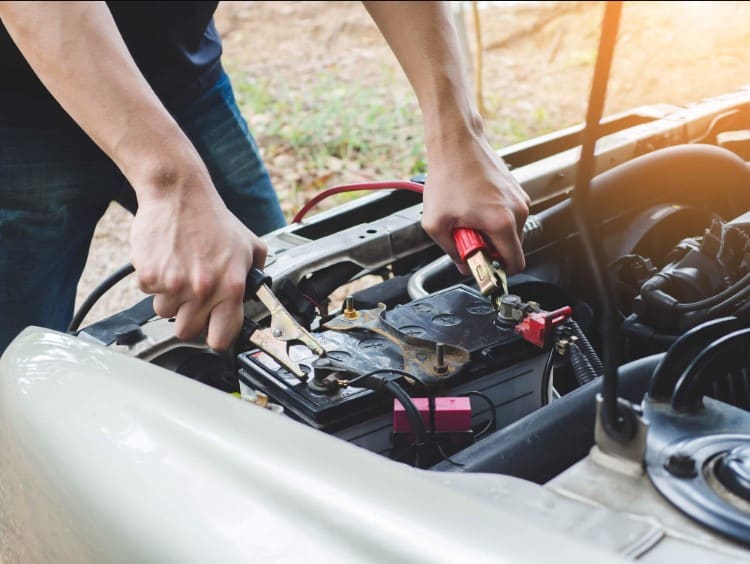
It's important to note that you should only try to jumpstart your car if you are confident in your ability to do so. If you're not sure how to jumpstart a car, it's best to call a tow truck or take the car to a mechanic. Attempting to jumpstart a car can be dangerous if done incorrectly, so it's important to be absolutely sure that you know what you're doing before trying it.
Steps to charging your car battery
If your car battery has run down, you'll need to charge it before you can start the car. The good news is that this process is relatively simple and can be done in a few easy steps. First, locate the positive and negative terminals on the battery. The positive terminal will usually be marked with a "+" sign, while the negative terminal will usually be marked with a "-" sign.
Next, attach the positive terminal of the charger to the positive terminal of the battery. Then, attach the negative terminal of the charger to the negative terminal of the battery. Once both terminals are connected, turn on the charger and let it run until the battery is fully charged. Depending on the size of the battery, this may take several hours.
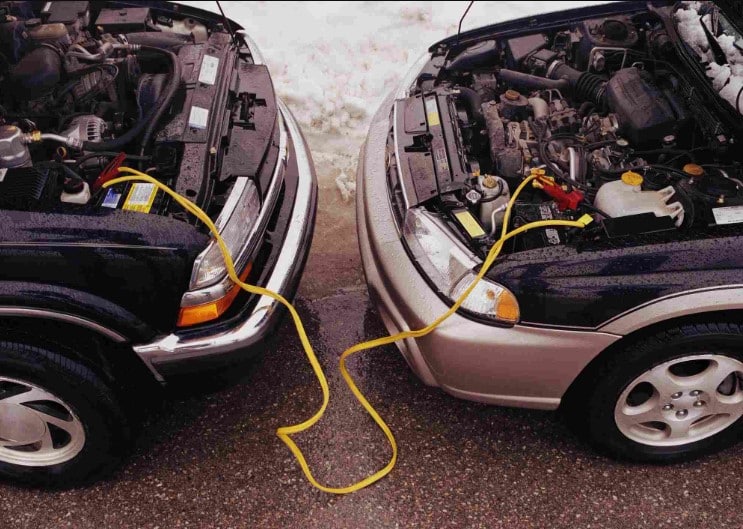
Once the battery is fully charged, you can disconnect the charger and start your car. If your car doesn't start, it may be necessary to jumpstart it. Once the car is running, you should drive it for a while to allow the alternator to recharge the battery.
The next time you need to charge your car, make sure that the battery is fully charged before connecting anything. To do this safely at home with just a hooked-up engine and no other machines running in front of it (for example: not when starting from cold), first, consult our guide on how best jump start a dead electric motorhome batteries-then only attempt repowering if confident enough doing so!
Maintaining a car battery after not driving
Even if you're not using your car, it's important to keep the battery in good condition. A weak or dead battery can make starting your car difficult, and in extreme cases can prevent your car from starting at all. A well-maintained battery, on the other hand, will give you fewer starting problems and will have a longer lifespan. There are a few simple steps you can take to keep your battery healthy: first, make sure to clean the terminals regularly.
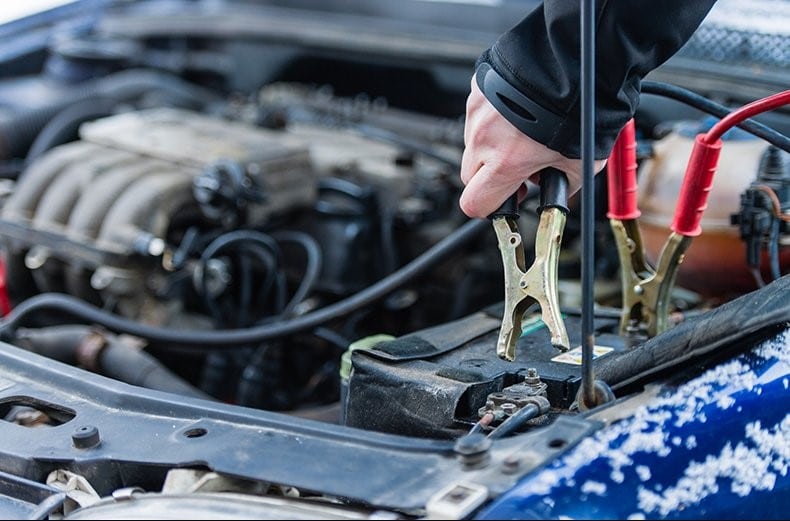
Over time, they can become corroded, which can prevent electrical current from flowing freely. Second, if you're going to be storing your car for an extended period of time, disconnect the battery to prevent it from being damaged by overcharging. And finally, if your car is more than three years old, consider replacing the battery altogether. By taking these simple steps, you can keep your car's battery running strong for years to come.
Is it ok to leave the car running for a shorter time?
Any time the engine is running, your car is emitting pollutants, so it’s best to avoid idling when possible. However, there are some instances when it’s ok to leave the car running for a shorter period of time. For example, if you’re waiting in line to pick up someone from the airport or drop them off, it’s fine to keep the engine running. The same goes for if you’re stopped at a long red light or in traffic.

In these cases, the car will be stationary for an extended period of time, so there’s no need to turn the engine off and on repeatedly. However, if you’re just running into the store for a quick errand, it’s best to turn off the engine and save gasoline and emissions. Whenever possible, it’s best to avoid idling. But in some instances, it’s ok to leave the car running for a short period of time.
Should I let my car idle while charging?
If you're like most people, you're probably curious about whether or not you should let your car idle while charging. After all, it seems like a waste of gas to keep your engine running when you're not actually going anywhere. However, there are a few things to consider before making a decision.

First of all, idling uses more fuel than driving at low speeds, so it's not the most efficient way to charge your battery. Additionally, idling can cause wear and tear on your engine, which can lead to costly repairs down the road. Ultimately, the best thing to do is to consult your owner's manual or speak with a qualified mechanic to get the most accurate advice for your specific vehicle.
How do I tell if my battery is OK after charging?
After charging your battery, you may be wondering how to tell if it is actually working. Below, we will go over a few tips on how to test your battery after charging it. We will also discuss some of the signs that indicate a battery needs to be replaced. So, if you are looking for information on how to check your battery after charging, keep reading!
The effects of idling
When a car idles, the engine is running but the vehicle is not moving. This can happen when a driver is stopped at a long red light, waiting in line at a drive-thru, or parked in a parking lot. While idling may not seem like a big deal, it actually has a significant impact on both the environment and the car itself. Idling emits pollutants into the air, including carbon dioxide and nitrogen oxides.
These emissions contribute to climate change and can also cause respiratory problems in people, particularly asthma sufferers. Additionally, idling wastes fuel and puts extra wear and tear on the engine, which can lead to more expensive repairs down the road. For all of these reasons, it's best to turn off the engine whenever possible when you're not actually driving. Not only will this help reduce your carbon footprint, but it will also save you money in the long run.

Your vehicle has a working alternator
A working alternator is vital to keeping your vehicle's battery charged. However, if your battery is not charging, there are a few things you can do to check if it is still working properly. First, check the connections to the battery to make sure they are clean and secure. Next, test the voltage of the battery using a voltmeter. If the voltage is below 12 volts, it may need to be replaced. Finally, examine the condition of the battery itself. If it is swollen or leaking, it will need to be replaced. By following these simple steps, you can ensure that your vehicle's battery is still in good working order.
Your vehicle’s alternator isn’t working well
The alternator in your vehicle helps to recharge the battery while the engine is running. If the alternator is not working properly, it can cause the battery to discharge faster than it can be recharged. As a result, the battery may need to be charged more often, and it may eventually become damaged.
To check if your alternator is working properly, you can first test the voltage of the battery. If the voltage is low, it may be due to a problem with the alternator. You can also check for cracks or other damage to the battery terminals. If you notice any damage, it is likely that the alternator is not working correctly and needs to be replaced.
What’s the best way to charge a car battery?
The best way to charge a car battery is to hook it up to a charger that is specifically designed for that purpose. There are different types of chargers available, so it is important to choose one that is appropriate for the battery in your car. Most chargers have an indicator light that will let you know when the battery is fully charged.

Once the charger indicates that the battery is full, it is important to disconnect it from the charger so that the battery does not overcharge. If a car battery is overcharged, it can shorten its lifespan or even cause it to catch fire. Therefore, it is important to follow the instructions that come with your charger and to monitor the charging process closely. By taking these precautions, you can ensure that your car battery stays healthy and lasts for many years.
How Many Volts in a Fully Charged Car Battery?
A car battery is typically 12 volts, but the voltage can vary between 10 and 14 volts. A fully charged battery should read between 12.6 and 12.8 volts on a voltmeter. If the voltage is lower than 12.4, the battery is considered discharged. The voltage of a car battery decreases as the battery ages and is used.
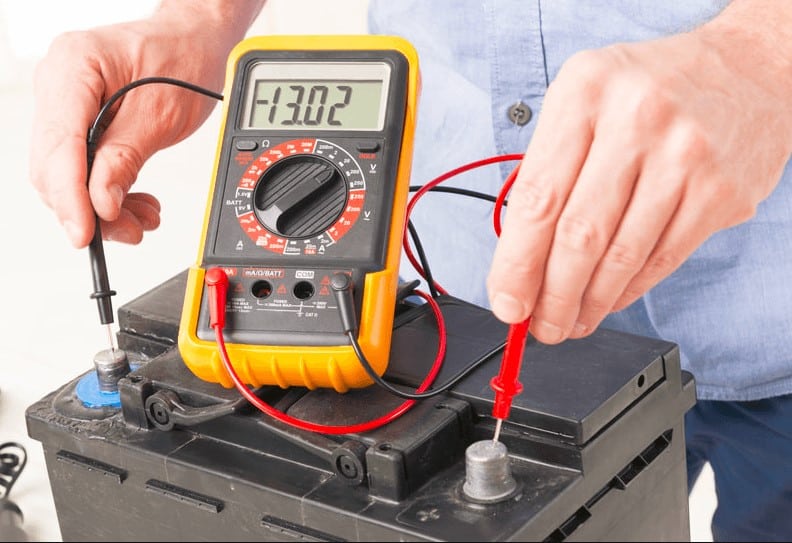
A car battery typically lasts between three and five years before it needs to be replaced. When a battery starts to fail, it will need to be recharged more often. The voltage of a car battery is also affected by temperature; colder temperatures reduce the voltage, while warmer temperatures increase it. For this reason, it's important to check the voltage of a car battery in both hot and cold weather to ensure that it is working properly.
Do Car Batteries Charge While Idling?
The charging system in a car is designed to maintain the battery's charge and to provide power to the electrical accessories while the engine is running. The charging system consists of a battery, a voltage regulator, and an alternator. The alternator is belt-driven and generates electricity as the engine runs. The electricity is used to charge the battery and to power the electrical accessories.
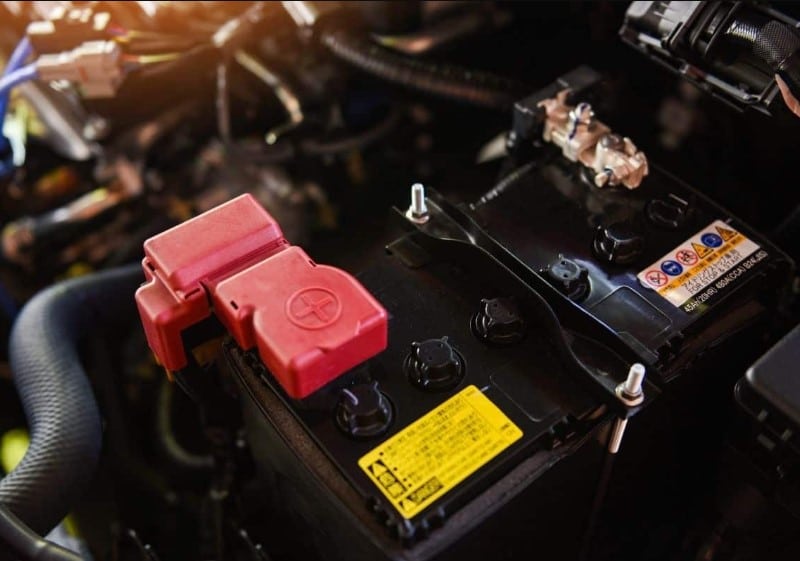
Most alternators have an internal voltage regulator that maintains the voltage at a set level. When the engine is idling, the alternator is not providing power to the electrical accessories, so the battery will be charged. However, if the engine is idling for an extended period of time, the battery may not be fully charged. If you need to keep your car idling for an extended period of time, it's a good idea to turn off any electrical accessories that are not essential. This will help to prevent your battery from being drained.
How Do You Know When Your Car Battery Needs to Be Replaced?
One of the most common reasons for a car breakdown is a dead battery. Most batteries will last for around three to five years, but if you don't take good care of your car battery, it might not last as long. There are a few things you can do to help extend the life of your battery, such as regularly cleaning the terminals and making sure the fluid levels are topped up. However, even with proper maintenance, eventually, your battery will reach the end of its lifespan and need to be replaced. But how can you tell when that time has come?
There are a few warning signs that your battery is on its last legs. If your engine is slow to start, or if it cranks more slowly than normal, that's a sign that your battery is losing its charge. Another sign is dimming headlights; when your battery is running low on power, it won't be able to provide enough juice to run your lights at full brightness. If you notice either of these signs, it's a good idea to get your battery tested as soon as possible. A certified mechanic will be able to tell you definitively whether or not you need a new battery.
https://autoemc.net/blog/how-long-to-leave-a-car-running-to-charge-battery/
Nhận xét
Đăng nhận xét